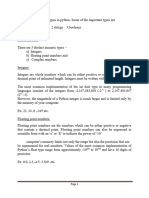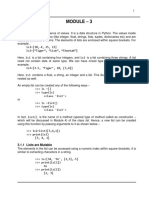0% found this document useful (0 votes)
9 views23 pagesString
The document provides an overview of string operations in Python, including membership tests, traversing strings with loops, and various string methods such as upper(), lower(), replace(), split(), find(), and others. It also covers functions like ord(), chr(), and enumerate(), along with string attributes like isalnum(), isalpha(), and isdigit(). Additionally, it explains methods for string formatting and manipulation, including join(), capitalize(), title(), and strip().
Uploaded by
KavithaPrasadCopyright
© © All Rights Reserved
We take content rights seriously. If you suspect this is your content, claim it here.
Available Formats
Download as PPTX, PDF, TXT or read online on Scribd
0% found this document useful (0 votes)
9 views23 pagesString
The document provides an overview of string operations in Python, including membership tests, traversing strings with loops, and various string methods such as upper(), lower(), replace(), split(), find(), and others. It also covers functions like ord(), chr(), and enumerate(), along with string attributes like isalnum(), isalpha(), and isdigit(). Additionally, it explains methods for string formatting and manipulation, including join(), capitalize(), title(), and strip().
Uploaded by
KavithaPrasadCopyright
© © All Rights Reserved
We take content rights seriously. If you suspect this is your content, claim it here.
Available Formats
Download as PPTX, PDF, TXT or read online on Scribd
/ 23


























































































